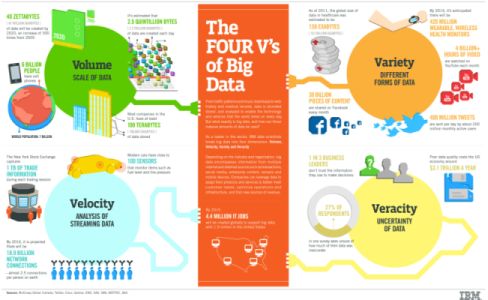
|
Digital Humanities Workbench |
Home page > Digital data > Big data Big dataBig data is a term for data sets that are so large or complex that traditional data processing application softwares are inadequate to deal with them. (Source: Wikpedia)  IBM infographic [Click to enlarge].
Characteristics of big data: the four V'sIn most literature, the characteristics of big data are described as follows:
In humanities research, examples of big data sets are communications via social media like Facebook and Twitter, which are analysed from a communication perspective, and large cultural data sets of visual material. However, in the context of humanities research also large newpaper archives (like LexisNexis Academic) and text collections (like Google Books) are sometimes treated anmd analysed as big data. Big data analysis requires advanced tools to extract meaning from the raw data. These tools transform, organize, and model the data to identify patterns and draw conclusions. The various techniques that are used to analyse big data sets are often referred to as data analytics. Specific instances of this relevant to the humanties are text analytics or text mining and cultural analytics. Further information
What is big data?
Wikpedia entry about big data
Big data in the humanities and social sciences
De KB, big data en digital humanities |
Other topics in this section: Introduction Digital text Digital images Structured data Linked (Open) Data |

